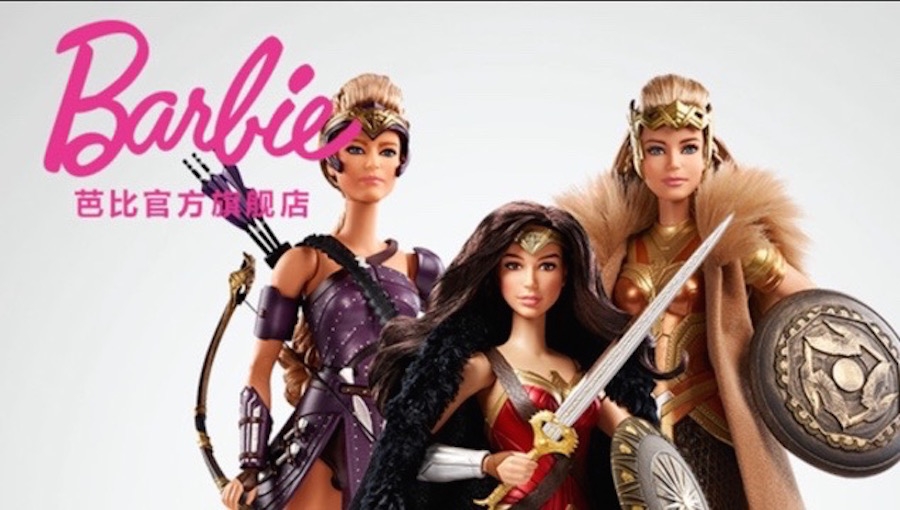I was watching the documentary, Tiny Shoulders: Rethinking Barbie, on HULU about the history of the Barbie doll and her place in society, and it occurred to me that she and Wonder Woman had more than a few things in common. They’re both one of the most globally recognizable female characters. They were both created as positive role models for young girls. And, they both create a lot of divisiveness and controversy when arguing whether they are actually serving as good or bad influences.
Barbie certainly has some strange beginnings. Looking for inspiration for their doll, Barbie creator Ruth Handler was in Germany and found such inspiration in a doll called Lilli; however, this wasn’t a children’s toy. It was an adult novelty toy made for grown men based on a popular adult comic strip. In the comic strip, Lilli was a sassy, gold-digging opportunist. The comic strip was so popular, they made a toy. The initial doll wasn’t much different from the original Barbie and intended to be hung on the rearview mirror. Mattel acquired the rights for Lilli and stopped production before rolling out Barbie. What a revolting development. It’s as hard as it is easy to imagine the inspiration for Barbie was little more than a call girl. Considering the world today, I doubt something this whacky would transpire.
It’s easy to see why Barbie has caused so much controversy in all of her years. She may have been created as a toy and inspiration for young girls, but what is one to make of her less-than-innocent beginnings?
By the same token, Wonder Woman was created as a role model for girls in response to Superman and Batman. Unfortunately, her creator’s penchant for bondage was heavily prevalent in the early years, with Wonder Woman being bound and spanked on a regular basis. Then, there’s the fact that she basically gave up her Amazon heritage for the first guy who washes up on the shore of Paradise Island. Girl power?
Barbie debuted in a bathing suit, and it is often argued that Wonder Woman’s costume was nothing more than a bathing suit. Times were different then, and I suppose it was the thought that counts.
I guess this is where it gets confusing. My sister had tons of Barbies growing up (Thank goodness!), and most of my female friends love Wonder Woman, thanks to the Lynda Carter version. As much as I pushed against the revision of the costume for the movie, I can say now that the skimpier costume is as impractical as it is inappropriate.
Barbie has come under fire for setting unrealistic expectations for young girls to live up to. In answer, Mattel has tried to come up with solutions to make Barbie more realistic and more socially acceptable. In 2016 Barbie released a line of dolls that represented all body shapes and sizes. I was totally on board with the idea, except for the fact that the packaging announced what body type the doll had: “Curvy, tall, thin, petite.” Labels? Really now, Mattel. I appreciate the effort, but why the labeling? I guess we’re just not there yet.
At the end of the day, I don’t think society should dictate role models. Wonder Woman and Barbie have and continue to inspire and empower women, girls, and the rest of the world. I guess another unwitting lesson provided be these two female legends is that it’s not as important as where you came from or where you’re going as much as how you get there.
I have and will always love Wonder Woman and Barbie and think they will both continue to be an important part of inspiration and empowerment for many generations ahead.
Hey! Where the heck is the Wonder Woman Meets Barbie comic book? Now that’s a crossover I’d pay good money for.
Follow me on Instagram (@MichaelFitzTroy).

